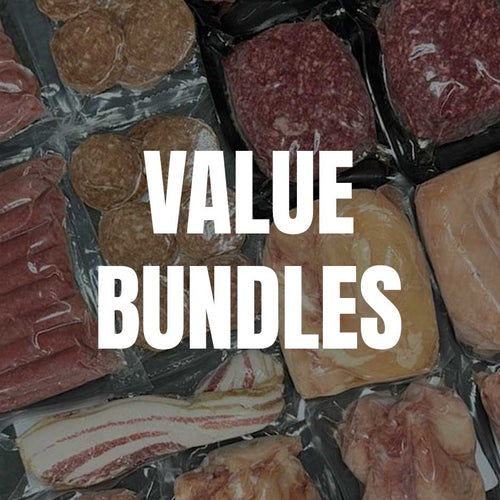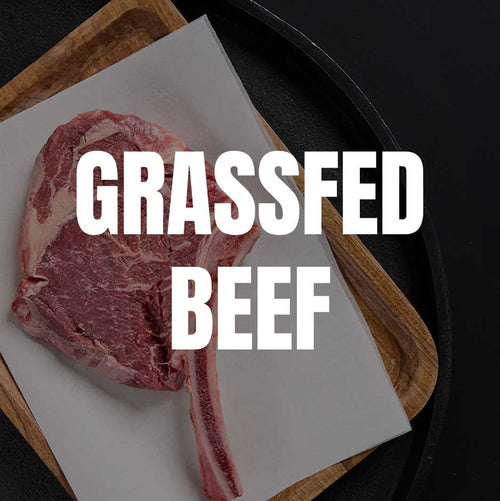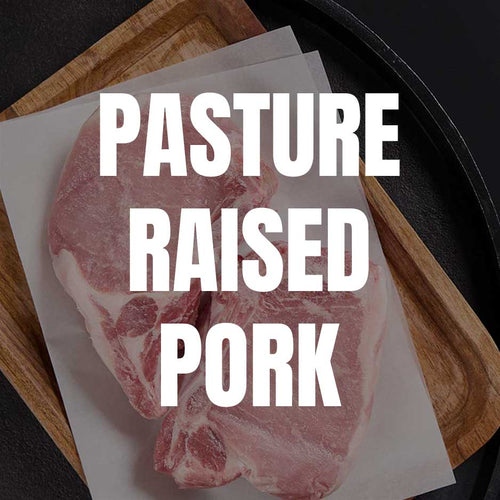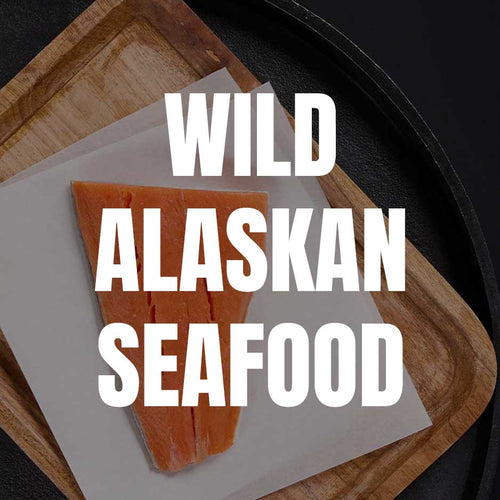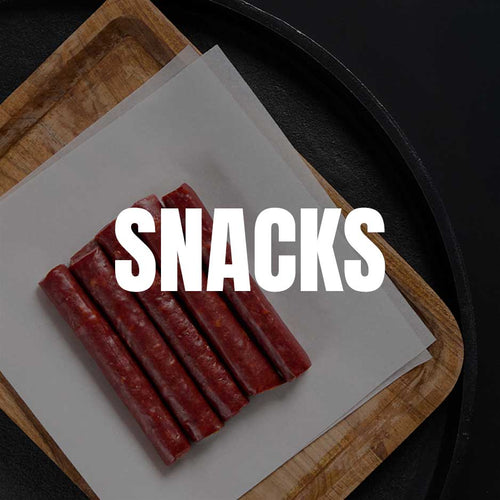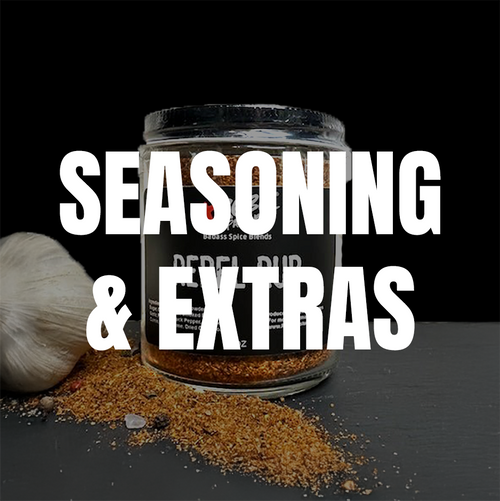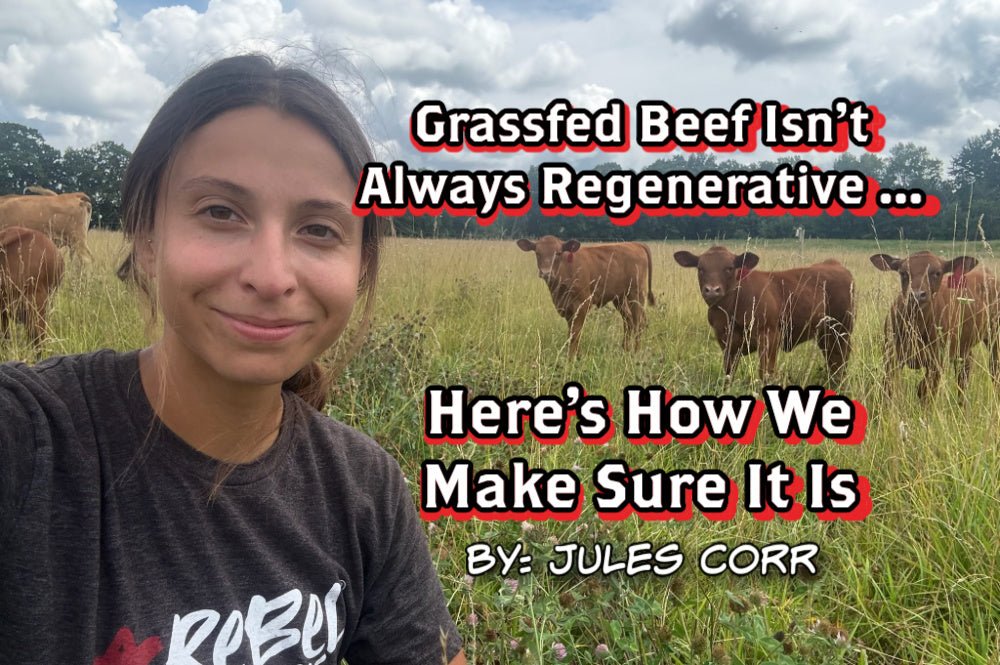
· By Jenni Bajema
Grassfed Beef Isn’t Always Regenerative - Here’s How We Make Sure It Is
In a recent Rebel Pastures social media post, Jenni broke down five common myths about grassfed beef. One in particular stuck with me—because it’s something I once believed myself:
That buying grassfed beef automatically means you’re making a better choice for the planet or for the animals.
The truth is: it depends. Not all grassfed beef is raised in a way that’s regenerative or is even humane. At Rebel Pastures, we’ve learned that grassfed is only part of the equation. It matters how those animals are raised, and what kind of care the land receives in return.
As the Farm and Fulfillment Lead at Rebel, I manage our livestock and implement our grazing systems. I’ve made it my mission to ensure that every decision we make supports not just the health of the animal, but also the health of the soil beneath their feet.
We live by this acronym that’s become a guiding light for me: CANI – Constant And Never-Ending Improvement.
That means we’re always learning. Always evolving. And yes—sometimes, making mistakes. But those mistakes are part of the path to doing better.
When “Best Practices” Aren’t the Best
This winter, I took part in a 2-day intensive course on regenerative grazing hosted by Understanding Ag. It was an eye-opener.
During our first years, we followed conventional advice that said 30 days was enough time to wait before grazing the same area again. Turns out, that’s only half the picture. Grass needs at least 60 days—30 to recover, and another 30 to rest—before it’s truly ready to be grazed again. What I understand now is that grass doesn’t just need time to bounce back—it needs time to rest.
That rest period after recovery is critical for the health of the plant, the root system, and the biology living in the soil. The recovery period allows the plant to photosynthesize efficiently, exchange nutrients with soil microbes, and prepare for the next grazing without entering stress.
If you graze too soon before this cycle is complete the plant will go into survival mode. It stops growing. The root system weakens. You may not see it right away above ground, but it’s happening below. Over time, this leads to thinning pastures, bare soil, and poor forage quality.
I also learned more about how damaging bare soil can be. When the sun beats down on uncovered ground, it will quickly overheat. Bare soil will reach temperatures easily over 100°F. This is hot enough to kill the microbial life that accelerates regeneration. Grass stops growing, the soil life stalls, and the land enters a kind of dormancy.
The comparison that stuck with me was this: it’s the difference between standing barefoot on pavement in full sun vs. standing under the shade of a tree on a hot day. Covered soil stays cooler, holds more moisture, and supports a living ecosystem beneath the surface.
Better beef doesn’t come from doing what’s always been done. It comes from slowing down, paying attention, and giving nature the time it needs to do what it does best.
 |
 |
Images above: The first image shows a clump of grass before grazing. The grass is lush, comes to a point, and the tips have begun to turn brown which means the grass completed its recovery period. The second image is where our cattle just grazed. The tips of this grass are jagged and come to an edge. This area will require 30 days of recovery before it starts to look like the grass on the left. Then it will need an additional 30 days to rest. The brown grass surrounding the second photo is trampled vegetation which will provide shade for our soil.
The Difference Between Rotational Grazing and Adaptive Grazing
People are shocked when I explain how much work it is to move our cattle several times a day with polywire and plastic posts. The common suggestion? “Why not just build permanent fencing grids and move them from one pen to the next?”
It would be easier—but it wouldn’t be better.
That’s the difference between rotational and adaptive grazing.
Rotational grazing follows a rigid system. It assumes each piece of pasture will respond the same way. But the land is alive. It’s not a spreadsheet.
Adaptive grazing gives us flexibility. It allows us to respond to the condition of the pasture, the weather, and the needs of our animals. If a section of land is especially thriving and lush, we can give it a short, high impact graze to fertilize and mulch the soil with high hoof action. A high impact graze looks like a much smaller graze area for a short duration of time (30 minutes to 3 hours). The animals will walk over the same spot many times, pushing the vegetation, manure, and urine into the soil. This is called ‘hoof action’. If done properly, this type of graze can rapidly accelerate regeneration!
What We’re Celebrating
There’s a lot to be proud of right now. We recently purchased our own bull and turned him out with the herd on July 1st. Last year we rented a bull, however, we had to wait till later in the summer to rent him, which pushed our calving season this year to a busier, hotter time. We have our bull about 6 weeks earlier this year, which means our calves will be born in a more favorable season.
We’re also experimenting with bale grazing this summer, unrolling massive hay bales to spread fertility through trampled vegetation and manure. This not only nourishes the soil—it also slows down our grazing rotation, giving pastures just a few more critical days to rest.
In June, we attended another pasture walk at JNelson Farms, hosted by Understanding Ag. Seeing what over a decade of regeneration looks like gave us a glimpse into our future—and the reassurance that we’re on the right path.
Image above: This is three weeks after we unrolled a bale and grazed it on this pasture. Can you see the difference?
We don’t have it all figured out—but we stay focused on what matters: paying attention, staying flexible, and making decisions that serve the land, the animals, and the people we feed. Every move we make is deliberate.
That’s what defines Rebel Pastures.
We’re not just raising animals. We’re raising the bar.
All the best,
Jules
Share:
2 comments
-
I have learned so much from Jenni’s emails AND the Wine Down Pasture Walk event.
Thank you Jules for an excellent piece of informative writing on rotational and adaptive grazing along with describing hoof action. I tell you Rebel Pastures has THE BEST TASTING STEAK that I have ever tasted! Melts in your mouth as you chew it! I always have a big smile on my face after that meal! :)Dawn Hoffman on
-
Thank you for what you are doing! You are a great example for farmers everywhere to think and observe and adapt so that everyone and everything can thrive.
Patricia on



